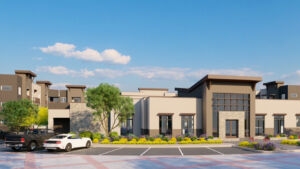First impressions start at the curb. Long before a potential buyer, tenant, or investor steps inside, they’ve already formed an opinion based on the property’s exterior. In today’s market—where competition is high and expectations even higher—upgrades like facade restoration, sidewalk replacement, and masonry improvements aren’t just about appearances. They’re strategic investments that can elevate property value, improve safety, and reduce long-term costs.
Why Exteriors Matter More Than Ever
Real estate professionals consistently emphasize that a property’s exterior sets the tone for everything inside. According to the National Association of Realtors, exterior projects routinely rank among the top renovations for return on investment. From a business perspective, this makes sense: an attractive, well-maintained exterior signals that the property is cared for, structurally sound, and safe.
For property managers, this can mean higher occupancy rates and fewer complaints. For owners, it means stronger resale opportunities and reduced long-term repair costs. In short, exterior renovations aren’t just cosmetic—they are essential investments in both value and durability.
DEEPER DIVE: Here’s where the residential real estate market stands in 2025
LOCAL NEWS: 100 best places to work and live in Arizona for 2025
Facade Restoration and Modernization
The facade is the face of any building. Over time, exposure to weather, pollution, and everyday wear can cause cracks, fading, or water infiltration. Left unchecked, these issues not only hurt curb appeal but can also compromise structural integrity.
Modern facade restoration goes beyond patchwork repairs. It often includes updating masonry, restoring historical details, or adding energy-efficient materials. For historic or landmarked properties, maintaining architectural character is critical, while for newer buildings, owners may prioritize sleek finishes or modern cladding systems.
The impact is twofold: improved aesthetics that attract buyers and tenants, and improved performance through better insulation and waterproofing. This combination of beauty and function makes facade restoration one of the most powerful exterior upgrades.
Sidewalks and Property Value
Sidewalks quietly shape first impressions. A clean, even, well-drained walkway signals care, lifts curb appeal, and helps homes show—and sell—better; cracked or uneven slabs do the opposite, hinting at deferred maintenance and unexpected costs. Experienced NYC sidewalk contractors note that quick repairs to hairline cracks, managing tree-root uplift, and keeping widths and slopes accessible prevent hazards and keep small issues from becoming costly replacements. Treated as part of the exterior design, the sidewalk ties the facade, entry, and landscaping together—turning the first few feet of frontage into measurable value.
Masonry as a Long-Term Investment
Brickwork, stonework, and other forms of masonry have been trusted for centuries for their strength and longevity. However, even the most durable masonry requires maintenance. Weather cycles can cause joints to deteriorate, water penetration can weaken structures, and poor upkeep can lead to costly repairs.
Masonry restoration and repointing not only extend the life of a structure but also preserve its character. For owners of historic properties, properly maintained masonry ensures compliance with preservation standards and maintains architectural integrity. For modern properties, updated masonry can add texture, strength, and timeless appeal that differentiates the building in the marketplace. As one stucco contractor in New Jersey notes, many clients see a significant increase in property value after installing new EIFS systems, as the upgrade can completely transform an outdated exterior into a modern, energy-efficient facade.
The Business Case for Exterior Renovations
From a financial perspective, exterior renovations provide measurable returns:
- Curb Appeal and Value: Buyers are willing to pay more for properties with well-maintained exteriors.
- Tenant Retention: Commercial tenants are more likely to renew leases in buildings that project professionalism and safety.
- Reduced Maintenance Costs: Addressing exterior issues early prevents minor problems from evolving into major expenses.
- Regulatory Compliance: Many municipalities enforce facade inspections, sidewalk maintenance, and safety codes—renovations ensure compliance and avoid costly penalties.
When evaluated through this lens, the cost of exterior upgrades is not an expense—it’s an investment that strengthens both immediate and long-term property value.
Looking Ahead
The future of real estate is competitive, and the properties that stand out will be those that blend performance with presentation. A strong exterior—whether through a restored facade, renewed sidewalks, or upgraded masonry—projects pride of ownership and a commitment to longevity.
For buyers, it sparks confidence. For tenants, it inspires trust. And for owners, it delivers measurable returns. In an industry where the first impression often defines the outcome, exterior renovations remain one of the smartest ways to transform property value.




